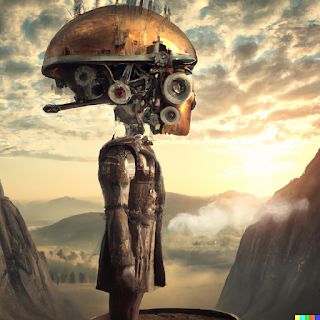 |
This month, the new AutoGPT is making headlines. AutoGPT enables advanced reasoning capabilities and understands context and concepts effectively in a configurable and automated manner. AutoGPT can provide valuable insights and recommendations, supporting data-driven decision-making and facilitating efficient business processes all automatically.
The automation component of AutoGPT can help reduce knowledge friction caused by the lack of time. If you don't have the time to study and research important and impactful topics, the lack of time becomes a source of knowledge friction. Automating the research, analysis, formatting and distribution of knowledge is a powerful feature.
In business, knowledge friction hurts. It often forces leaders to make decisions based on conjecture, rather than by data-driven decisions. In addition, it can have the following implications:
1. Information asymmetry: When one party in a transaction has more or better information than the other, it can lead to imbalances in bargaining power and market inefficiencies. For example, when sellers with low-quality products can exploit uninformed buyers.
2. Market failures: Knowledge friction can contribute to market failures when information is either scarce or costly to acquire. For instance, consumers might not be aware of the full range of available products or their quality, leading to suboptimal choices.
3. Barriers to entry: Imperfect information can create barriers to entry for new businesses or innovations. Startups may struggle to convince potential customers of their value proposition or face difficulty acquiring necessary information to compete effectively with established firms.
4. Price discovery: Knowledge friction can impact the process of price discovery in markets, as buyers and sellers may not have complete information about supply and demand conditions. This can result in price volatility, inefficiencies, and the misallocation of resources.
5. Decision-making: In the presence of knowledge friction, individuals and businesses may face difficulties in making informed decisions, leading to suboptimal choices and potentially reduced economic efficiency.
6. Innovation and technology diffusion: Knowledge friction can slow down the dissemination of new ideas, technologies, and best practices, limiting the potential for innovation and technological advancements to drive economic growth.
7. Competitive advantage: Firms that can manage and reduce knowledge friction may gain a competitive advantage over their rivals. This can be achieved by investing in research and development, employing better information management systems, or developing a reputation for transparency and trustworthiness.
Knowledge friction plays a significant role in capitalistic markets by influencing market efficiency, competition, innovation, and decision-making. Reducing knowledge friction can lead to improved market outcomes, but it's important to understand that not every businesses wants to remove knowledge friction. Some companies have built successful businesses in niche markets that thrive on knowledge friction. They are unlikely to be as enthusiastic with artificial intelligence as others.
Kevin Benedict
Futurist at TCS
View my profile on LinkedIn
Follow me on Twitter @krbenedict
Join the Linkedin Group Digital Intelligence
***Full Disclosure: These are my personal opinions. No company is silly enough to claim them. I work with and have worked with many of the companies mentioned in my articles.



























